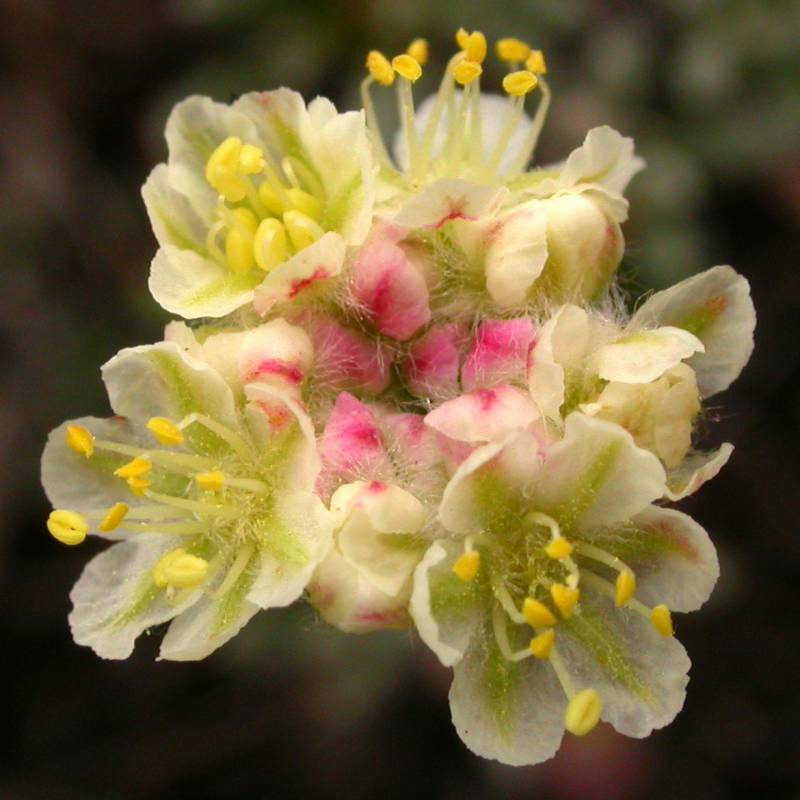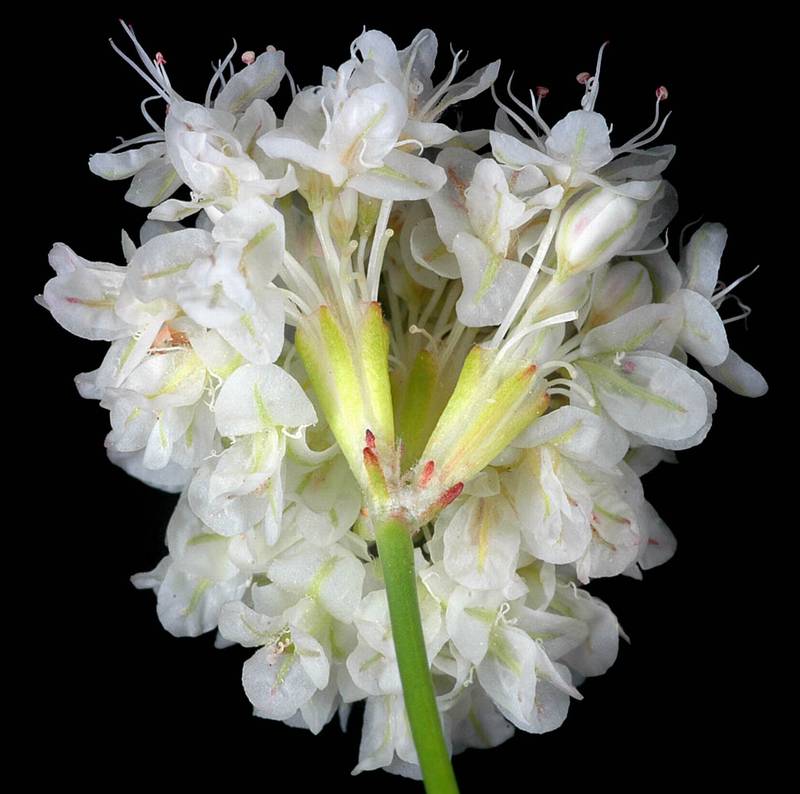|
thyme buckwheat, thyme-leaf wild buckwheat
|
bare-stem buckwheat, naked buckwheat
|
| Intricately branched, low and spreading to erect shrub 5-15 cm. tall, somewhat gray-woolly to silky throughout. |
Perennial with a few sparingly-branched, green, leafless stems to 5 dm. tall. |
Leaves many, linear to linear-spatulate, 3-10 mm. long, usually revolute, somewhat wooly beneath and silky above. |
All basal, the blades oblong to oval, dense gray-woolly beneath and green above with some soft, fine hairs, narrowed abruptly to a slender petiole 2-4 times as long as the blade. |
Flowering stems 3-8 cm. tall, always with a whorl of leaves about mid-length; involucres single and terminal, top-shaped, 3-5 mm. long, the teeth 6-8, erect, triangular, 1 mm. long; perianth with a stipitate base 0.5-1 mm. long, densely hairy, the 6 segments obovate, yellow or white to rose-red, 4-6 mm. long; plants dioecious, the staminate flowers with 9 stamens, the filaments hairs only at the base, the pistillate flowers with stout, spreading styles 0.5-1 mm. long. |
Open, branched inflorescence with leafy bracts at the first and second points of branching; involucres usually in capitate clusters, tubular, with 5 erect, short teeth; flowers interspersed with numerous, filiform bracts that protrude form the involucres. Tepals white to pinkish or yellowish, 3-4 mm. long, divided nearly to the base into oblong segments. |
Achenes pubescent above |
|
|
|
|
|
| Separate from the similar Eriogonum douglasii by the involucre lobes; E. thymoides has erect lobes, E. douglasii, reflexed to spreading lobes. |
Separate from E. elatum by the leaves and flower clusters. E. elatum has large leaves somewhat triangular in shape and green on both surfaces, and it has only a few flowers in each cluster. |
| April-June |
June-August |
| Sagebrush deserts, dry ponderosa pine forest openings, and open ridges in lower mountains. |
Sandy or rocky places from the lowlands to subalpine. |
Occurring east of the Cascades crest in central Washington; central Washington to Oregon, east to Idaho.
|
Occurring on both sides of the Cascades crest in southern Washington; southern Washington to California and Nevada.
|
| Native |
Native |
| Not of concern |
Not of concern |
E. baileyi, E. cernuum, E. codium, E. compositum, E. douglasii, E. elatum, E. flavum, E. heracleoides, E. maculatum, E. marifolium, E. microtheca, E. niveum, E. nudum, E. ovalifolium, E. pyrolifolium, E. sphaerocephalum, E. strictum, E. umbellatum, E. vimineum |
E. baileyi, E. cernuum, E. codium, E. compositum, E. douglasii, E. elatum, E. flavum, E. heracleoides, E. maculatum, E. marifolium, E. microtheca, E. niveum, E. ovalifolium, E. pyrolifolium, E. sphaerocephalum, E. strictum, E. thymoides, E. umbellatum, E. vimineum |
|
|
| |



